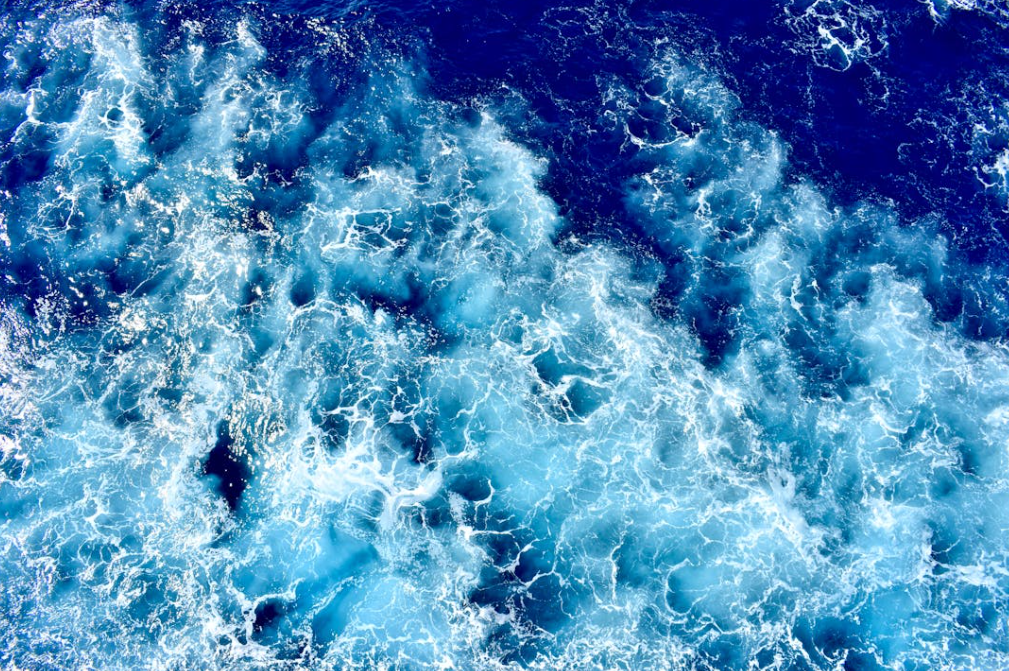Nestled in the heart of the North Atlantic, the Azores archipelago is a hidden gem that beckons adventurers and marine enthusiasts alike. While many know the Azores for its volcanic landscapes, lush green pastures, and unique cultural heritage, the islands are also home to an extraordinary underwater world. Beneath the surface lies a realm of deep reefs, vibrant coral gardens, and majestic underwater mountains that harbor diverse marine ecosystems. This comprehensive guide delves into the fascinating environment of the Azores’ deep reefs, exploring their formation, ecological significance, and the innovative technologies used to study them, as well as the challenges they face and what the future may hold.
1. The Unique Marine Environment of the Azores
Geological and Oceanographic Setting
The Azores are situated at the junction of three major tectonic plates—the North American, Eurasian, and African plates—making the region geologically dynamic. This tectonic activity gives rise to a complex underwater topography, including deep-sea mountains, hydrothermal vents, and extensive coral reefs. The islands themselves were formed by volcanic activity, and the same processes continue beneath the waves.
The oceanic conditions around the Azores are equally fascinating. The region benefits from a unique mix of warm and cold ocean currents that converge in the area, creating nutrient-rich waters that support abundant marine life. This convergence leads to high primary productivity, which in turn fuels the growth of coral gardens and supports the diversity of fish and invertebrate species that call the reefs home.
Coral Gardens: Life in the Depths
Coral gardens in the Azores are not the typical shallow-water coral reefs found in tropical climates. Instead, many of these coral ecosystems exist in deeper, cooler waters, where the species have adapted to low-light conditions and fluctuating temperatures. The corals found here are often more resilient to environmental changes, forming robust structures that serve as vital habitats for a myriad of marine organisms.
The underwater gardens are teeming with life: from colorful sponges and soft corals to hardy gorgonians and anemones, the biodiversity in these deep reefs is astounding. These coral formations provide shelter, breeding grounds, and feeding areas for fish, crustaceans, and mollusks, creating complex food webs that are essential for the overall health of the marine ecosystem.
Underwater Mountains: The Giants of the Deep
Beneath the Azores, towering underwater mountains, often referred to as seamounts, rise from the ocean floor. These underwater peaks are formed by volcanic activity and tectonic forces, similar to the islands above sea level. They create a dramatic landscape that influences ocean currents, enhances nutrient mixing, and supports rich biodiversity.
Seamounts play a crucial role in the marine ecosystem as biodiversity hotspots. They attract a wide range of species, from migratory fish to deep-sea invertebrates. The structure of these underwater mountains provides numerous niches for organisms to thrive, contributing to the ecological complexity of the region. Furthermore, these features often serve as natural laboratories for scientists studying evolutionary biology and the adaptation of species to extreme environments.
2. The Formation and Ecology of Deep Reefs in the Azores
Coral Reef Formation in Deep Waters
Coral reefs typically form in warm, shallow tropical waters, but the Azores challenge this norm. The deep reefs here are formed by corals that have adapted to cooler, nutrient-rich waters. These corals, while different in appearance and structure from their tropical counterparts, perform the same ecological functions. They build calcium carbonate skeletons that form the reef framework and create habitats for marine life.
The process of coral growth in the Azores is influenced by several factors:
- Water Temperature: Although the waters are cooler, they remain stable enough to allow coral growth. The corals in this region are specially adapted to these conditions, with slower growth rates that result in denser, more resilient structures.
- Nutrient Availability: The mixing of currents in the Azores brings nutrients from deep waters to the surface, fostering an environment where even deep-water corals can thrive.
- Light Penetration: In deeper waters, light is limited, so the corals rely more on symbiotic relationships with microorganisms that help them acquire energy. This adaptation has led to unique forms of photosynthetic and non-photosynthetic corals that contribute to the reef’s diversity.
Biodiversity and Ecological Roles
The deep reefs of the Azores serve as critical habitats that support a wide array of species. Their ecological roles include:
- Habitat Provision: The complex structures formed by coral reefs provide shelter and breeding grounds for fish, invertebrates, and even marine mammals.
- Nutrient Cycling: Coral reefs play a pivotal role in the cycling of nutrients, maintaining the health of the surrounding marine ecosystem.
- Refugia for Endangered Species: As climate change impacts shallow-water ecosystems, deep reefs may serve as refugia for species that can no longer thrive in warmer, more acidic conditions.
- Genetic Reservoirs: The unique genetic makeup of deep-water coral species can provide insights into evolutionary processes and may be crucial for future restoration efforts.
3. Technological Innovations in Exploring Deep Reefs
Remote Operated Vehicles (ROVs) and Autonomous Underwater Vehicles (AUVs)
The study of deep reefs in the Azores has been revolutionized by advancements in underwater technology. Remotely Operated Vehicles (ROVs) and Autonomous Underwater Vehicles (AUVs) have become indispensable tools for marine researchers.
- ROVs: These unmanned submersibles can dive to extreme depths, capturing high-definition footage and collecting samples. Their ability to operate in harsh, high-pressure environments allows scientists to explore areas that are otherwise inaccessible.
- AUVs: AUVs are used for extensive mapping of the ocean floor. They can operate autonomously over long distances, gathering data on the topography, temperature, and chemical composition of deep reef areas.
These technologies not only enhance our understanding of deep reefs but also facilitate long-term monitoring, enabling researchers to track changes in the ecosystem over time.
Advanced Imaging and Sampling Techniques
High-resolution imaging systems, such as 3D cameras and laser scanners, have enabled detailed studies of reef structures and biodiversity. These tools allow scientists to:
- Create Detailed Maps: Precise mapping of deep reef structures provides insights into their formation and growth patterns.
- Monitor Health: Regular imaging helps track the health of coral populations, detect signs of bleaching or disease, and assess the impact of environmental changes.
- Collect Samples: Advanced sampling techniques allow for the collection of small coral fragments and microbial samples without causing significant damage to the ecosystem.
Data Analytics and Machine Learning
The vast amounts of data collected from deep-sea explorations require sophisticated analytical tools. Machine learning algorithms and big data analytics are increasingly being used to process and interpret this information.
- Predictive Models: By analyzing historical data, scientists can develop predictive models to forecast future changes in the reef ecosystem.
- Species Identification: Automated image recognition systems help identify species present on the reefs, providing valuable insights into biodiversity and ecological relationships.
- Environmental Monitoring: Data analytics enable continuous monitoring of key environmental parameters, such as water temperature, pH levels, and nutrient concentrations, which are essential for understanding reef dynamics.
4. The Importance of Conservation and Sustainable Practices
Threats to Deep Reef Ecosystems
Despite their resilience, deep reef ecosystems in the Azores face significant threats:
- Climate Change: Rising ocean temperatures and acidification pose major risks, potentially leading to coral bleaching and reduced calcification rates.
- Deep-Sea Mining: The potential extraction of minerals from the seafloor could disrupt these delicate ecosystems, leading to habitat destruction and loss of biodiversity.
- Pollution: Although remote, the deep-sea environment is not immune to pollution. Runoff from land-based activities and plastic waste can eventually reach these ecosystems, affecting the health of marine life.
Strategies for Conservation
Efforts to conserve deep reefs are multifaceted and require international collaboration. Key conservation strategies include:
- Marine Protected Areas (MPAs): Establishing MPAs around vulnerable reef sites can help safeguard these ecosystems from industrial activities and overexploitation.
- Sustainable Aquaculture: In some cases, aquaculture projects can reduce pressure on wild reef populations by providing alternative sources of seafood.
- Research and Monitoring: Continued research is critical to understanding the impacts of climate change and human activity on deep reefs. Long-term monitoring projects, supported by advanced technologies, help track the health of these ecosystems and inform conservation strategies.
- Public Awareness and Education: Raising awareness about the importance of deep reefs and the threats they face can mobilize support for conservation initiatives. Educational programs, documentaries, and interactive exhibits can help bring the wonders of the deep sea to a broader audience.
Community and Policy Engagement
Engaging local communities and policymakers is essential for successful conservation:
- Local Stewardship: Empower local communities to participate in reef conservation through citizen science programs and sustainable tourism initiatives.
- International Policy: Work with international bodies to develop regulations that protect deep-sea ecosystems from unsustainable exploitation.
- Funding and Research Grants: Secure funding for conservation projects and technological innovation, ensuring that long-term efforts are well-supported.
5. The Broader Implications: Beyond Marine Science
Inspiring Innovation in Biotechnology
The unique adaptations of deep reef organisms have significant potential applications in biotechnology. For example, enzymes that function in extreme conditions may lead to breakthroughs in industrial processes, while unique genetic traits could inspire new medical treatments. Studying these organisms not only advances our understanding of life in extreme environments but also paves the way for innovative solutions to human challenges.
Implications for Climate Change Mitigation
Coral reefs play a vital role in the global carbon cycle. The calcification process in corals helps sequester carbon dioxide, which can have implications for mitigating climate change. Restoring and preserving deep reef ecosystems may contribute to broader efforts to reduce atmospheric CO₂ levels and combat global warming.
Promoting Sustainable Seafood
Healthy coral reef ecosystems are essential for maintaining marine biodiversity, which in turn supports sustainable fisheries. By protecting deep reefs, we help ensure that marine life continues to thrive, securing a sustainable future for seafood and supporting the livelihoods of coastal communities.
Cultural and Educational Impact
The wonders of the deep sea inspire awe and curiosity. Educational initiatives centered around deep reef exploration can spark interest in marine biology, environmental science, and conservation among students and the general public. Documentaries, museum exhibits, and virtual reality experiences based on deep reef research help communicate the beauty and complexity of these ecosystems, fostering a global culture of environmental stewardship.
6. The Future of Deep Reef Research and Conservation
Advancements in Technology
As technology continues to evolve, our ability to explore and understand deep reef ecosystems will only improve. Future advancements may include:
- Enhanced ROVs and AUVs: Next-generation submersibles will be able to operate more efficiently, covering greater distances and reaching deeper depths with higher precision.
- Real-Time Data Transmission: Improved communication technologies will allow researchers to receive real-time data from the deep sea, facilitating rapid responses to environmental changes.
- AI-Powered Analytics: Continued integration of artificial intelligence will help process and analyze complex datasets, providing new insights into reef dynamics and species interactions.
Global Collaborative Efforts
The challenges facing deep reef ecosystems are global, and addressing them requires international cooperation:
- Joint Research Initiatives: Collaborative projects between countries bordering the Atlantic can pool resources, share knowledge, and develop unified conservation strategies.
- Standardized Monitoring: Establishing international standards for reef monitoring will ensure consistent data collection and allow for comprehensive assessments of reef health.
- Policy Frameworks: Global agreements on deep-sea mining, pollution control, and marine conservation are essential to protect these fragile ecosystems from unsustainable exploitation.
Expanding Public Engagement
Increased public engagement is key to fostering a collective commitment to deep reef conservation:
- Citizen Science Programs: Involving the public in data collection and monitoring can expand the reach of research projects and build a broader base of support for conservation efforts.
- Interactive Educational Platforms: Digital platforms and virtual reality experiences can make deep-sea exploration accessible to everyone, sparking interest and advocacy for marine conservation.
- Media and Outreach: Documentaries, social media campaigns, and public lectures can raise awareness about the importance of deep reefs and the innovative techniques being used to protect them.
7. Conclusion: A Journey of Discovery and Stewardship
The deep reefs of the Azores represent one of nature’s most captivating and resilient wonders. These coral gardens and underwater mountains are not only biological treasures but also critical components of our planet’s marine ecosystem. As we continue to grapple with the impacts of climate change, pollution, and overfishing, the importance of preserving these deep-sea oases cannot be overstated.
Innovative restoration techniques, advanced exploration technologies, and global collaborative efforts are paving the way for a sustainable future. By harnessing these tools, scientists and conservationists are working tirelessly to restore and protect these unique ecosystems, ensuring that the biodiversity and beauty of the deep Atlantic are preserved for generations to come.
Exploring deep reefs is a journey that expands our understanding of life on Earth. It challenges conventional notions of where and how life can thrive, and it inspires us to innovate and adapt in the face of environmental challenges. The insights gained from studying these ecosystems have far-reaching implications—from potential breakthroughs in biotechnology to enhanced strategies for climate change mitigation and sustainable seafood production.
The future of deep reef research is as dynamic and resilient as the ecosystems themselves. With each technological advancement and collaborative initiative, we move closer to a world where our oceans are healthier and more sustainable. This endeavor is not only about scientific discovery—it is also about stewardship, responsibility, and the recognition that the health of our oceans is intrinsically linked to the well-being of our planet.
For anyone passionate about marine life, environmental conservation, or scientific exploration, the deep reefs of the Azores offer a compelling narrative of nature’s ingenuity and resilience. They remind us that even in the darkest depths of the ocean, life finds a way to flourish. By embracing and protecting these deep-sea wonders, we can ensure that our blue planet remains a vibrant, dynamic home for all its inhabitants.
In a world facing unprecedented environmental challenges, the restoration and preservation of deep reef ecosystems serve as a beacon of hope—a testament to what can be achieved through innovation, collaboration, and unwavering commitment to sustainability. As we continue to explore these underwater gardens, we are not only uncovering the secrets of the deep but also forging a path toward a more sustainable and resilient future.



